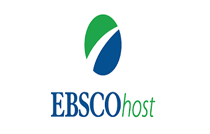Mansoura Veterinary Medical Journal
Document Type
Review Article
Subject Areas
Bacteriology
Keywords
Mycotoxins in foodstuffs
Abstract
Mycotoxins are toxic complexes generated by various genera of filamentous fungi and pose severe public health hazards due to their carcinogenic and mutagenic properties. Toxigenic fungi produce mycotoxins on various foodstuffs when favorable conditions for their production are exist. The most important mycotoxin-producing fungal genera are Aspergillus, Fusarium and Penicillium. The major mycotoxin of concern, including aflatoxins, trichothecenes, ochratoxins, patulin, fumonisins, and zearalenone, are expressively contaminate foodstuffs, with implications for human and animal health. There are various environmental factors influencing mycotoxin production involving temperature, water activity, animal type, aeration, pH, light, and nature of substrate. The temperature and relative moistness range for ideal mycotoxin generation may shift from that steady fungal development. The high temperature and moistness stress primarily have a potential issue. A full understanding of the existence of mycotoxins in addition the implementation measures to overcome their contamination of foodstuffs is crucial. There are different important analytical techniques to precisely screen the levels of mycotoxins contamination and give a wider overview about what is the most common, pathogenic; along with further strategies to control measures. Thus, in this review sampling, sample preparation and different analytical methods for determination of mycotoxins have been discussed.
How to Cite This Article
Elkenany, Rasha and Awad, Amal
(2021)
"Types of Mycotoxins and different approaches used for their detection in foodstuffs,"
Mansoura Veterinary Medical Journal: Vol. 22:
Iss.
1, Article 6.
DOI: https://doi.org/10.21608/mvmj.2021.161191
Receive Date
2020-08-26
Accept Date
2021-03-20
Publication Date
3-31-2021






